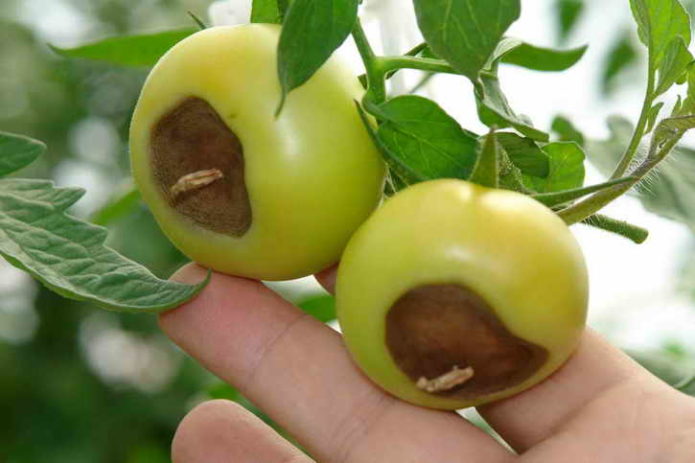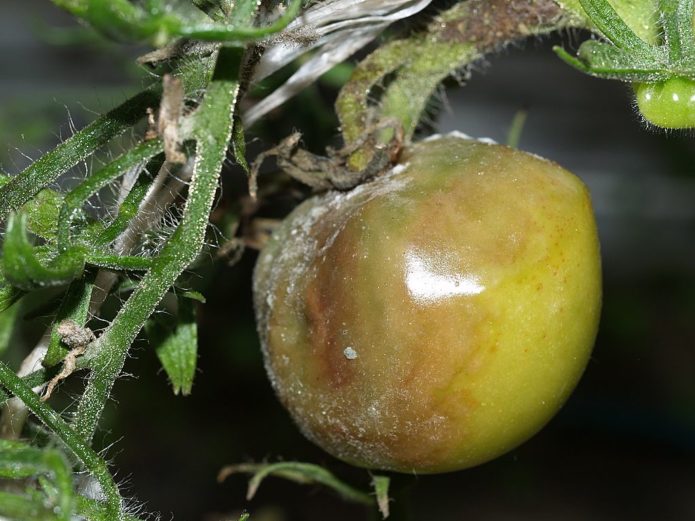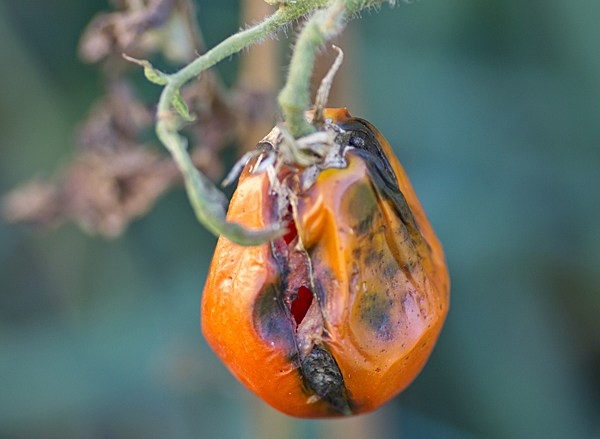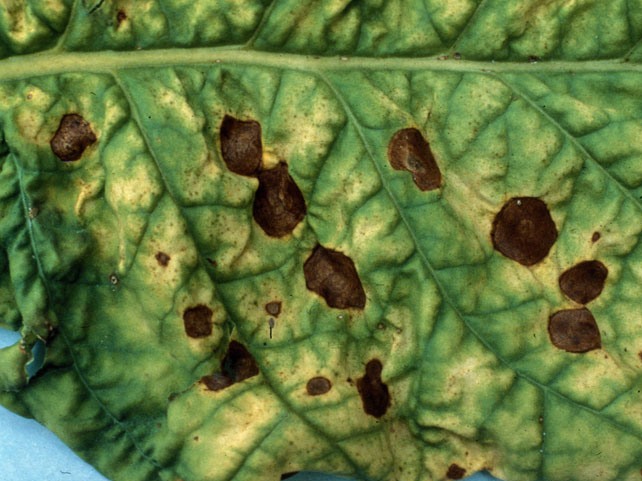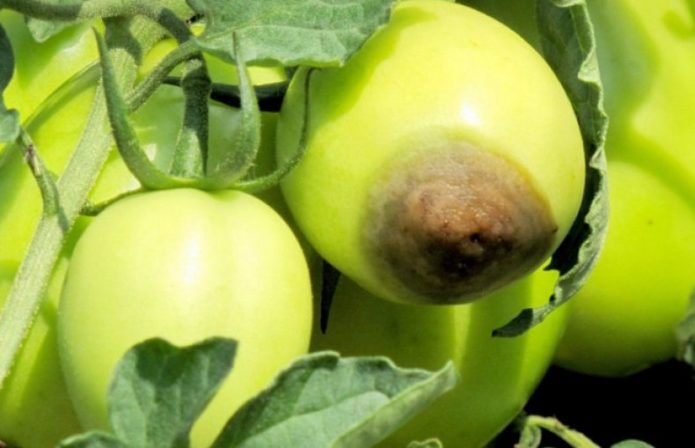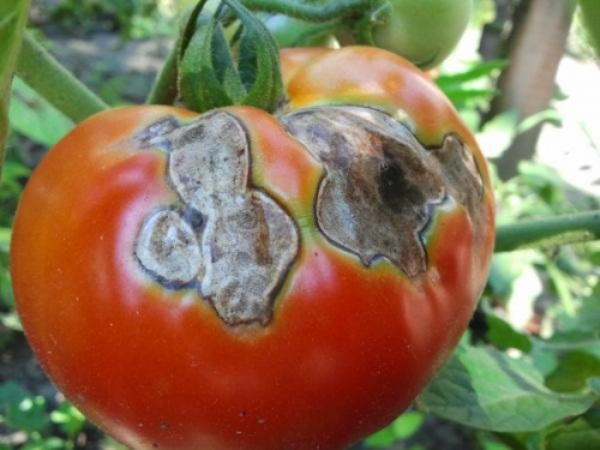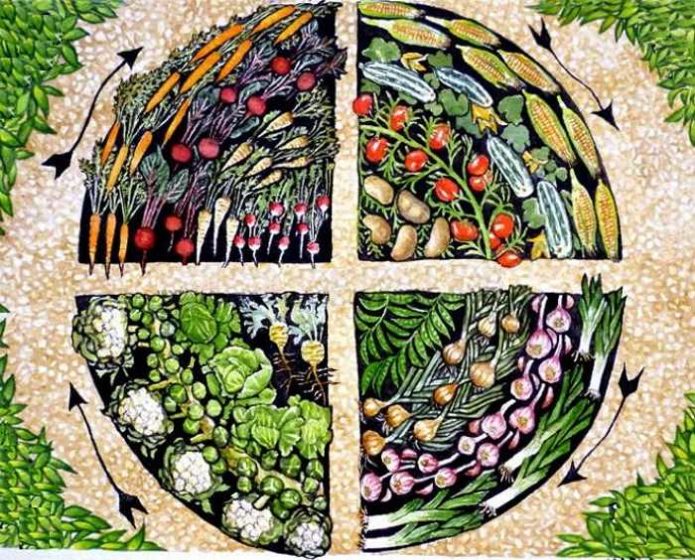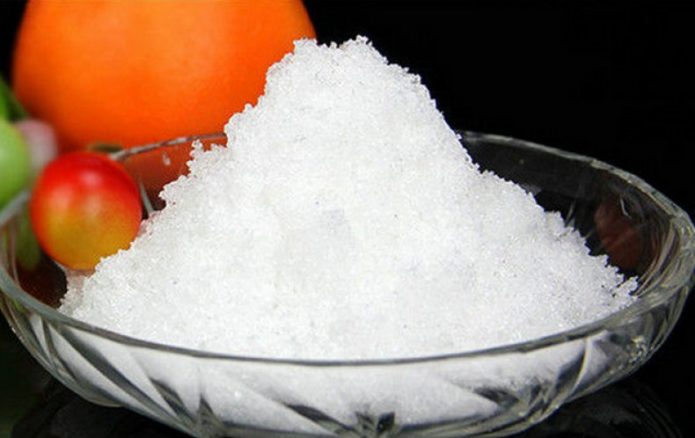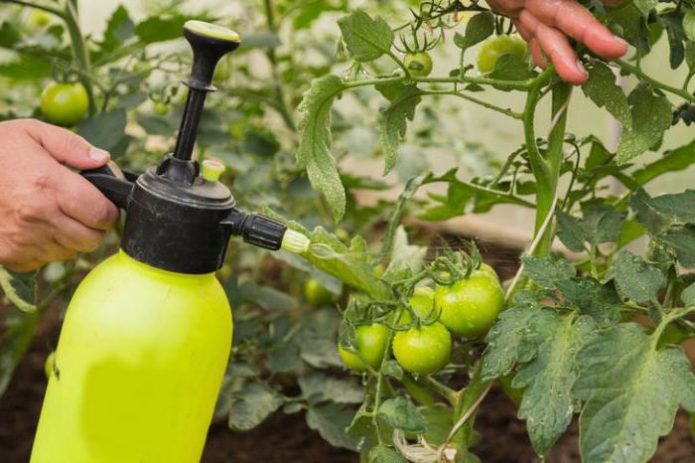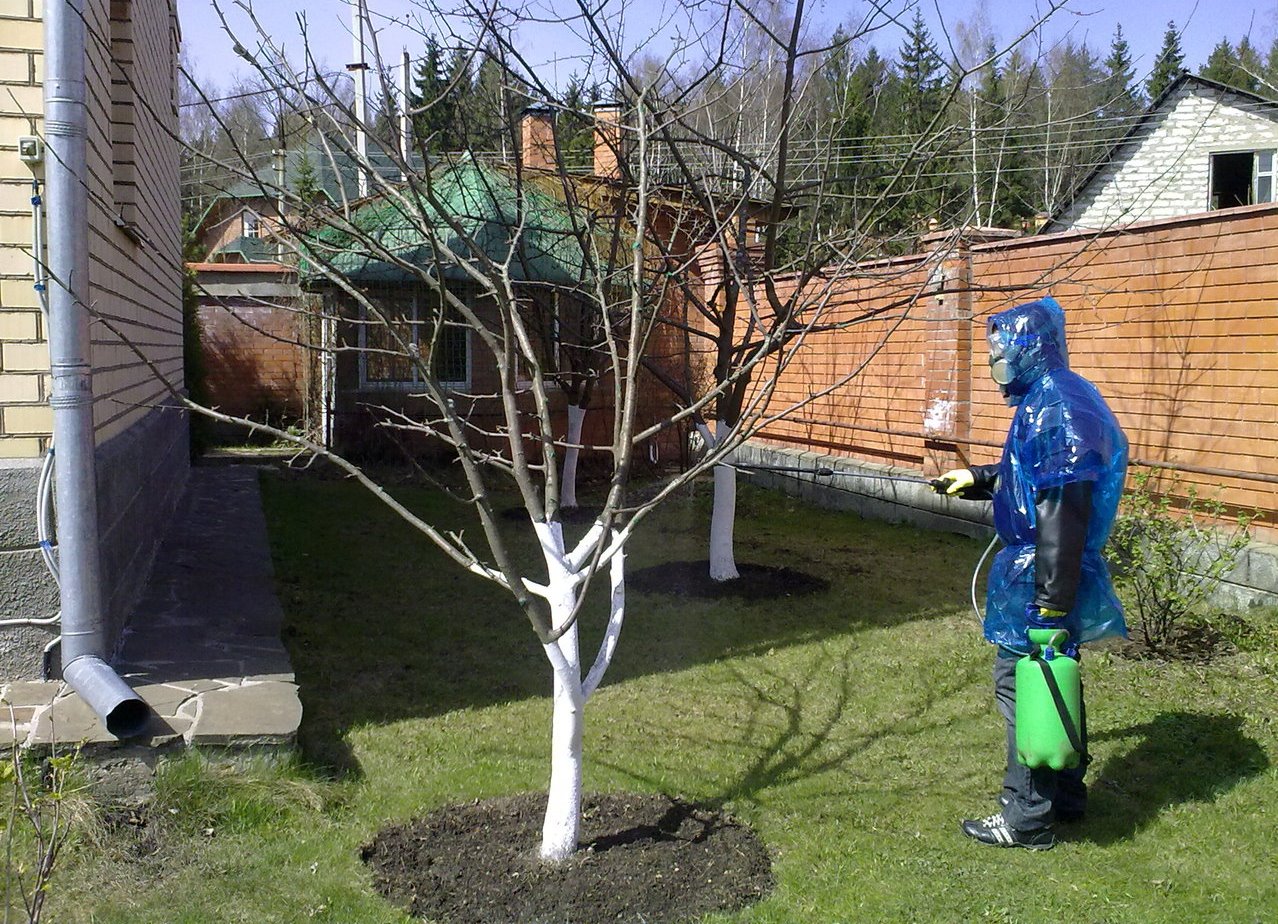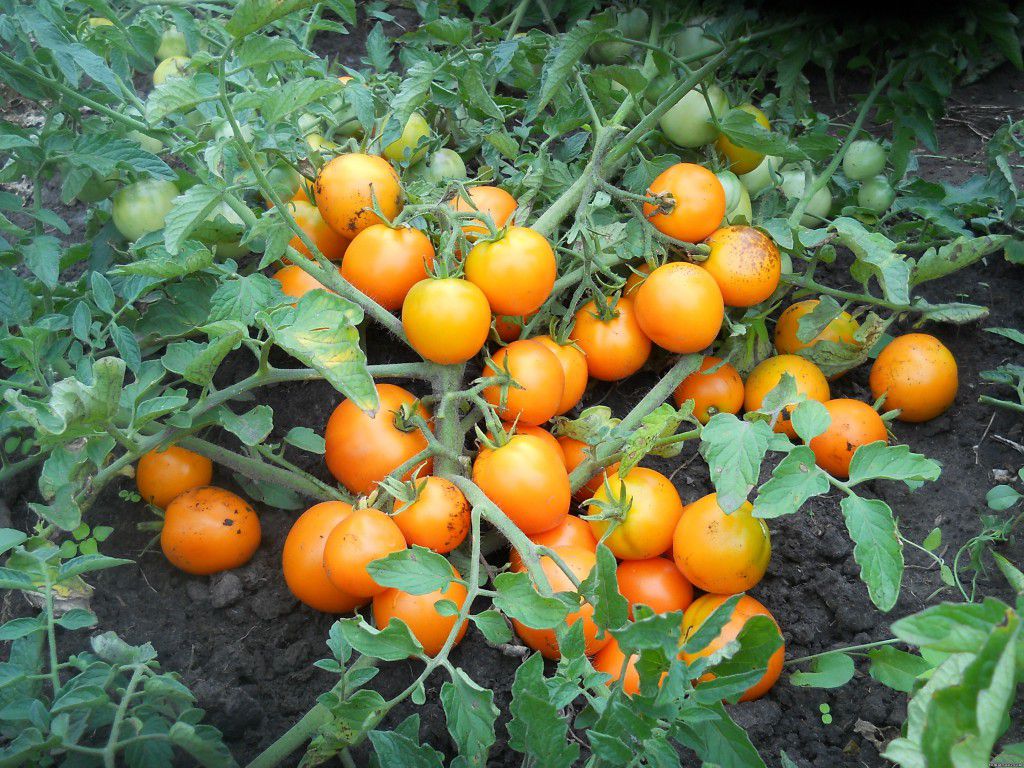If tomatoes rot on a bush in the beds, what should a gardener do? First, try to save at least some of the crop. Secondly, it is imperative to figure out why this happened and take preventive measures, taking care of the next year's harvest.
Content
Why do tomatoes rot on a bush
Rotting tomatoes on the bush can be caused by viral diseases. Owners of gardens and summer cottages in their beds are most often faced with:
- late blight,
- summit and black rot,
- alternariosis,
- necrosis.
Spores of fungal diseases can be carried by the wind and, like an enemy landing, make a "soft landing" on the green parts of the plant. In addition, they are sometimes in the ground and from there, through the root system, they begin their destructive work. Its essence in both cases is the same: pathogenic microorganisms, finding themselves in a favorable environment for them, actively multiply, disrupting the process of protein biosynthesis in the plant. As a result, the cells of an already formed, but not fully ripe fruit begin to decompose.
Some diseases affect only part of the fruit - its tip or the place where the tomato is attached to the branch, some destroy the vegetable completely, but the result is almost the same - it is not possible to save these fruits. However, on other branches, tomatoes are ripening, which the disease has not yet touched - they must be fought for.
Late blight
Every gardener who grows tomatoes not in greenhouses, but in the garden knows about this disease. Late blight manifests itself as follows: in the lower part of the fruit, small dark brown spots become clearly visible. Every day they increase in size, and the color turns from brown to black. This means that the rotting process has captured the fruit from the inside.
The activity of the disease directly depends on weather conditions. If the summer is hot and dry, late blight will not harm the plantings. If the humidity is high, it rains every now and then, it is cool - the fungal disease is active as never before.
Infection usually occurs through the soil - phytophthora spores persist in it for a long time and, if there was no preliminary treatment of the beds with fungicides, they will certainly make themselves felt.
Read more about the best options for processing tomatoes from late blight in article.
Alternaria
This disease reveals itself as spots of a dark brown color not on the tip of a green tomato, as in late blight, but in the region of the stalk. At the same time, the whole fruit seems velvety, but there is nothing good about it - a plaque from spores looks so unusual.
Weather conditions favorable for this disease - high humidity (around 70%), temperatures from + 25 to +30aboutFROM.The disease injures not only the fruits, but also the leaves of tomatoes - they also become covered with dark spots and fall off.
Bacterial necrosis
As a result of this disease, tomatoes completely rot on the vine. The first sign of bacterial necrosis of immature fruits is the formation of a white mesh on their surface. If the fetus has time to turn red, the onset of the disease can be judged by the two brown rings in the area of the peduncle. Unfortunately, neither green nor already reddened fruits will be able to fully ripen - a cloudy liquid will begin to appear inside both of them, the tomatoes will begin to crumble from the branches, as soon as someone's hand touches them.
Damage will be noticeable on the stem of the plant - mucus will appear on it, it will begin to crack. But the leaves may not change their color for a long time, however, they look wilted. This sometimes confuses gardeners - they are worried that the plants do not have enough water, and they begin to "solder" them intensively, and this further aggravates the situation.
Necrotic streak (streak)
This disease is a type of necrosis. It affects both open field plants and greenhouse crops equally. The stem and petioles help to recognize the disease - stripes of red-brown tones appear on them. Fruits on such plants become covered with dark spots and crack, not having time to ripen completely. Rotting of the whole fruit begins precisely because of these cracks - spores of pathogenic fungi enter them.
Black spot
The disease affects both greenhouse crops and those that grow in the beds. You should worry when small, barely noticeable dark green spots begin to appear on the leaves of the plant, which gradually begin to increase in size. Then comes the turn of the fruits, spots are also formed on them: first, shiny and convex, and then - similar in appearance to the damage left by the scab.
Black spot is transmitted from diseased plants to healthy ones with the help of air currents. This process is especially active in warm rainy weather - dangerous bacteria get onto the leaves and fruits along with drops of water.
Vertex rot
Many gardeners consider this disease to be exclusively greenhouse, but it also affects vegetables in the beds if several factors negative for the plant come together: heat, irregular watering and poorly prepared, acidic soil, in which nitrogen predominates and very little calcium. The mechanism of development of the disease is as follows: leaves that need watering, but do not receive them, begin to take moisture from the fruits, as a result, their decay occurs.
It happens that gardeners confuse top rot with late blight, but there is a true distinguishing feature - the first disease affects only fruits, late blight - and fruits, and stems, and leaves. Tomatoes that did not have time to ripen, which fell ill with apical rot, become covered with black spots over the entire surface of the fruit.
The peculiarity of the disease is that, as a rule, young bushes in the initial stage of fruiting suffer from it, but the plant does not completely die. Infected fruits, of course, are not suitable for food, but on the same bush (if the plant is provided with good care), new, completely healthy and safe for humans can ripen.
Black rot
This disease affects the entire fetus.... First, black areas appear, which are pycnidia - colonies of the smallest harmful fungi. Then the tomato begins to harden, shrivels, and if the weather is rainy at this time, it will rot.
Other causes of rotting tomatoes
Often, problems are caused by improper feeding or lack of such: for example, vitamin deficiency or an excess of vitamins.When the top dressing is too generous, root burns and rotting may occur - the leaves wither, and the fruits deteriorate before they mature.
Irregular watering is very dangerous for plants: if there is enough water for the leaves, then the fruits, for sure, are destitute - small black spots appear on their tips, gradually increasing, and the core becomes hard.
Another reason for the decay of tomatoes may be that the owner bought seedlings of tall varieties, and did not bother to tie up the stems - that is, the fruits lie on the wet ground, deteriorate.
What to do to heal the future harvest
If the green tomatoes that form on the bushes have begun to rot, the gardener's first impulse is to save those that the disease has not touched. The most radical way is to collect the remaining crop and carry it under a roof, in a dry place, protected from sunlight. There the tomatoes will gradually turn red and be ready for consumption. Unfortunately, they will not work as fragrant and sweet as fruits that have fully ripened in the garden.
You can save part of the harvest on the bush if the plant is ill with late blight, and there are no signs of it directly on the fruits. The treatment of the green patient with Bordeaux liquid will help out, provided that it is very thorough - not a single focus of infection can be missed.
For the treatment of bushes, not only chemicals are used, but also folk remedies. Consider options for saving plantings from various diseases.
Against late blight
Work is underway after the very first signs of the disease are detected. A healing shower is recommended for bushes using:
- Bordeaux liquid (1% concentration);
- the drug Oxyhom (for 10 liters of water - 2 tablets);
- copper oxychloride (for the same amount of water - 40 g of substance).
Spraying with the last two preparations is carried out if at least 20 days remain before harvesting, for Bordeaux liquid the conditions are milder - 3 days is quite enough. It is better to organize spraying at the end of the day when the heat subsides... Experts give the following recommendation: if you have to treat late blight regularly, you need to take different drugs every year - the pathogenic microflora will not get used to them, which means that the effect of treatment will be high.
And a few more tips for those who are trying to protect their beds from late blight every garden season. Take advantage of proactive measures. A good effect will be given by treating the bushes (2 weeks after planting) with Trichodermin. Bordeaux liquid will also give a lasting result: the first treatment is carried out at the same time, and after another 2 weeks - the second. Opponents of "chemistry" can use folk remedies, although they are not so radical. The most effective of these is a garlic infusion made from 1.5 tbsp. garlic, 1.5 g of potassium permanganate and 10 liters of water. Spraying dates are arbitrary.
Experienced gardeners consider effective irrigation with water, to which 40 drops of iodine and 30 g of calcium chloride are added to 10 liters. Average consumption per plant is 0.5 l.
When the first buds begin to form on the plantings, agents that strengthen the immunity of plants (Epin-extra) and additional nutrition in the form of phosphorus-potassium fertilizers will be useful.
Video: means of combating late blight
Against alternaria
This disease, just like late blight, is treated with Bordeaux liquid. And in order not to let the disease into the vegetable beds at all, experts recommend using new varieties of tomatoes with increased immunity to Alternaria: Lana, Novinka Pridnestrovie, Countryman.
And a few more tips: this disease bypasses the beds on which crop rotation is observed, weeds are pulled out in a timely manner and do not thicken the crops.
Against top rot
An effective remedy against this disease is a calcium nitrate solution (concentration - 0.4%). During the season, 3-4 treatments are carried out, the interval between which is 5-7 days. Solution consumption - 0.5 l per 10 m2... Another option, no less effective, is possible - spraying with a solution of calcium sulfate (8 g of the substance is consumed per bucket of water).
Today, gardeners, according to experts, face the problem of vertex rot less and less, thanks to new varieties that are resistant to this disease: Zvezdochka, Moravian Miracle, Lakomka. Of the agrotechnical methods, pinching and regular watering are recommended (if the weather is hot, you need to water the tomatoes daily, and abundantly).
Against bacteriosis
This disease often leaves the gardener no chance to preserve the plant, usually they have to be removed from the garden. Effective in the very initial stage of the disease can be:
- Kartokide - 50 g per 10 l of water,
- Oxyhom - 2 tablets for the same volume of water.
Spraying of bushes should be carried out no later than 20 days before the start of harvesting. If such terms do not suit you, you can buy bio-fungicides in a specialized store, they can be consumed just a few days before eating vegetables (for each specific drug, the timing is always specified in the detailed instructions).
General preventive measures
The gardener never lives for one day, so lessons should be learned from the difficult seasons in terms of disease control:
- do not break tomato beds near potato - these crops have common enemies;
- prevent thickening of plantings and the dominance of weeds;
- for prevention, disinfect strong tomatoes from infected plants by immersing them in water at a temperature of 60 for a couple of minutesaboutFROM;
- to collect seeds for future plantings only from those plants that have shown themselves to be resistant to diseases;
- parts of infected plants and fruits spoiled by infection should be destroyed immediately and in no case used for composting;
- for new plantings, use ash containing alkaline elements - it will make the soil safer from top rot and other diseases (ash can be poured into holes prepared for seedlings).
In order for various rot not to ruin the crop, you need to regularly inspect the plantings and take the necessary rescue measures when the very first symptoms of the disease are detected. Before each new season, it is useful to be interested in new products - drugs that protect tomatoes from various misfortunes appear on the shelves of specialized stores regularly, so there is always an opportunity to choose the most effective ones and use them, exactly following the instructions.
